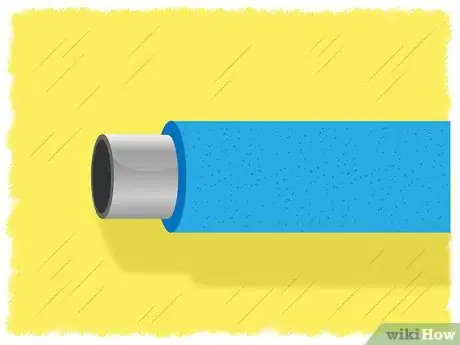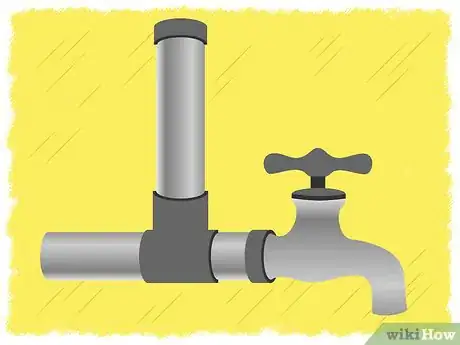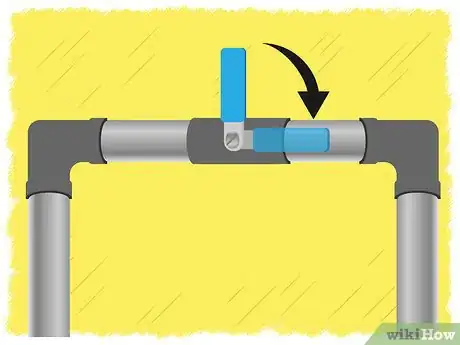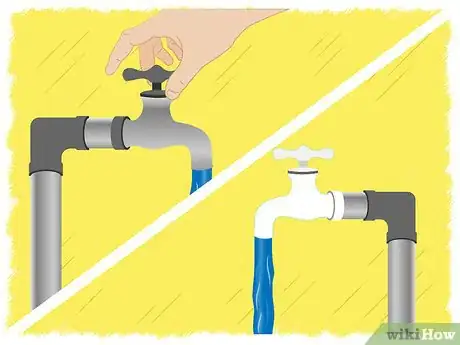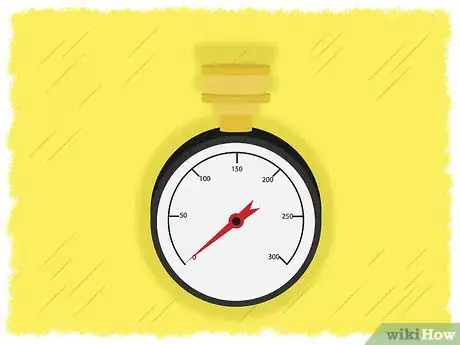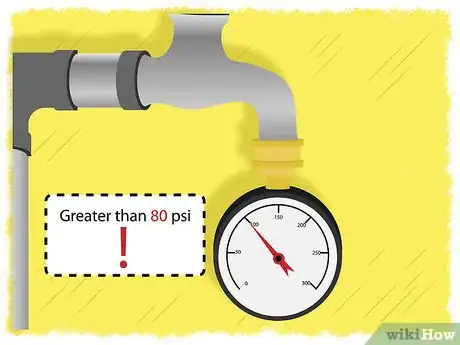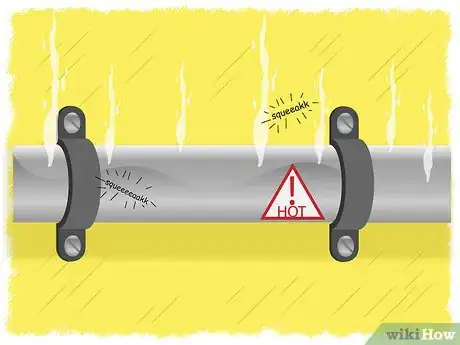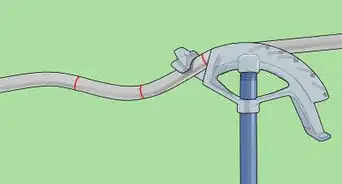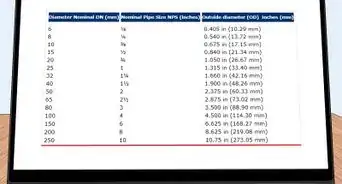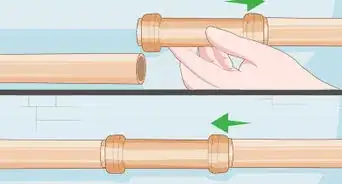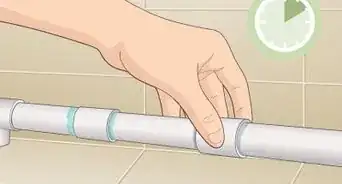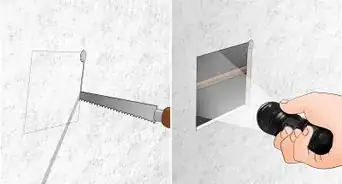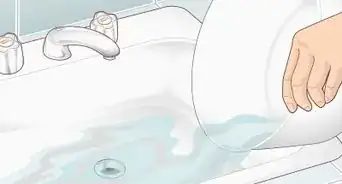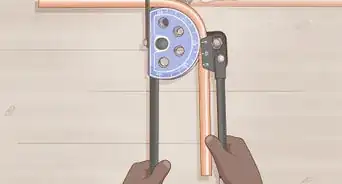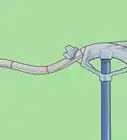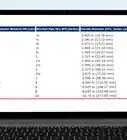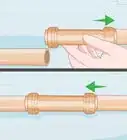X
wikiHow is a “wiki,” similar to Wikipedia, which means that many of our articles are co-written by multiple authors. To create this article, volunteer authors worked to edit and improve it over time.
This article has been viewed 225,014 times.
Learn more...
Pipes can be noisy for many reasons, from loose anchoring brackets to high water pressure. Different noises can mean very different pipe issues, so it is important to diagnose the issue based on whether your pipes squeak, bang or rattle. Quiet noisy pipes using extra anchoring brackets, cushioning materials or adjusting your water pressure.
Steps
Method 1
Method 1 of 4:
Fix Loose Banging or Rattling Pipes
-
1Check all pipe anchoring locations. Older pipe anchors come loose over time and may need to be tightened or replaced. Pipes are usually anchored to wood floor joists using metal clamps.
- Replace these clamps if they are loose, or add more clamps if the pipes are easily moved. Install anchors every 6 to 8 feet (1.8 to 2.4 m) on horizontal pipes and every 8 to 10 feet (2.4 to 3 m) on vertical pipes.
-
2Add cushioning to prevent rattling or banging pipes.
- Wrap a piece of rubber around the pipe and secure the wrapped area to the joist with a metal clip. If you don't have pipe insulating foam, a piece of rubber inner tube or garden hose will work. Do this every 4 feet (1.2 m) along length of the pipe.
- Leave room for expansion around the pipe or anchoring mechanism. This is particularly important when insulating plastic pipes.
- Avoid galvanized anchors on copper piping. Even small pipe movement can create a lot of noise when metal on metal comes against metal.
Advertisement
Method 2
Method 2 of 4:
Check for Lack of Air
-
1Check the air chambers behind plumbing fixtures for water buildup. Air chambers are designed to provide a cushion when the water is turned on and off. If the chamber fills with water, you may hear a hammer noise when turning your faucets on and off.
-
2Turn off the home's main water supply.
-
3Drain all the pipes in the home by turning on every faucet in the house.
-
4Close the faucets before turning on the main water supply. This should restore air in the designated air chambers and quiet noisy pipes.
Advertisement
Method 3
Method 3 of 4:
Diagnose Banging Noises
-
1Purchase a home water pressure testing gauge at a local hardware or home improvement store. They are not expensive.
-
2Connect the gauge to an outside faucet that is regulated. A regulated faucet usually comes out of the wall. Turn the water faucet on and record gauge reading, which is in pounds per square inches (psi).
-
3Call a plumber to replace the pressure regulator if the gauge reads over 80 psi.
Advertisement
Method 4
Method 4 of 4:
Stop the Squeaky Pipes
-
1Examine hot water pipes if you hear squeaking. Hot water pipes expand and rub against their anchoring straps when the water runs through them. The rubbing can sound like a squeaky noise when the water is turned on or off.
-
2Cushion hot water pipes the same way you would cushion banging pipes, by placing either pipe cushioning foam or rubber inside the anchor.
Advertisement
Community Q&A
-
QuestionWhy does my hot-water heater bang when I turn off the hot water at a faucet?
 Community AnswerAir in the pipes makes them bang.
Community AnswerAir in the pipes makes them bang. -
QuestionHow do I stop my pipes from being noisy?
 Community AnswerTurn off the water supply to the property. Find the lowest tap on the property and turn it on until no water runs out. Turn it off and turn on the main supply. Turn on lowest tap and let run for a minute until no air is heard in pipes. The problem should be fixed.
Community AnswerTurn off the water supply to the property. Find the lowest tap on the property and turn it on until no water runs out. Turn it off and turn on the main supply. Turn on lowest tap and let run for a minute until no air is heard in pipes. The problem should be fixed. -
QuestionWhat do I do if my pipes bang?
 Community AnswerYou need to go inside the wall where the noisy pipes are located and strap them down to stop the shaking.
Community AnswerYou need to go inside the wall where the noisy pipes are located and strap them down to stop the shaking.
Advertisement
Things You'll Need
- Pipe cushioning foam
- Rubber tube
- Anchoring brackets
- Screws
- Screwdriver
- Water pressure gauge
About This Article
Advertisement

